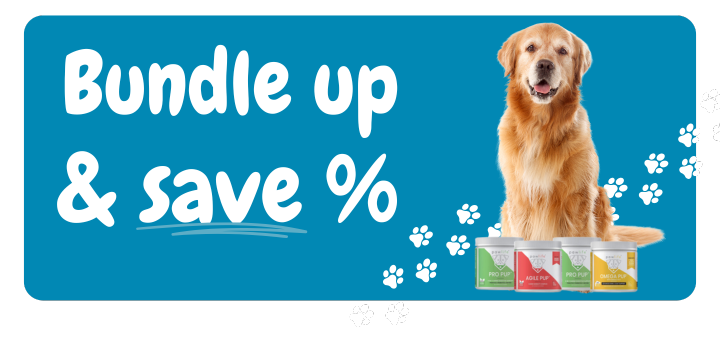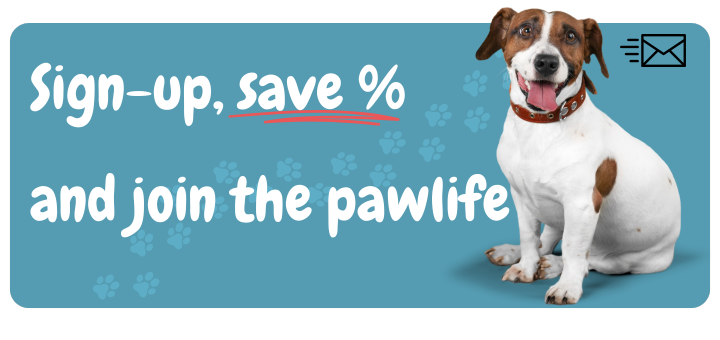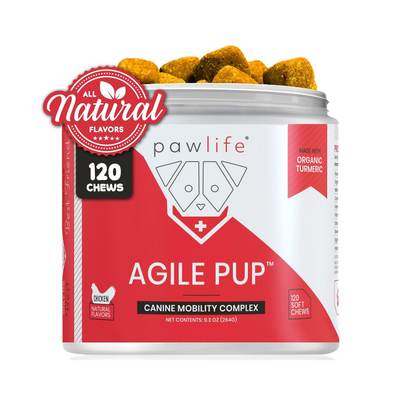Supporting Your Growing Puppy's Health with Daily Nutrition
Watching your puppy grow is one of the most rewarding experiences as a pet parent. From those first wobbly steps to bursts of playful energy, every stage feels like a milestone. But along with those changes comes one of the most important nutrition decisions you’ll ever make — knowing when to transition your puppy to adult dog food.
This shift plays a vital role in your dog’s long-term health, impacting everything from their energy levels to bone strength and digestive comfort. At Pawlife Pets, we believe feeding your pup well means understanding how nutrition evolves as they grow. Let’s explore the right timing, signs, and transition methods to make the switch safely.
Understanding How Puppy Food Differs from Adult Dog Food
Puppies aren’t just miniature versions of adult dogs — their nutritional demands are vastly different. During the first 12 to 24 months, your dog’s body undergoes rapid development, requiring higher concentrations of calories, protein, and essential nutrients to support bone growth, brain development, and muscle formation.
Puppy formulas are specially designed with these needs in mind. They typically contain:
- Higher protein content to build muscle and repair tissue.
- More fats and calories to fuel boundless puppy energy.
- Enhanced calcium and phosphorus ratios for strong bones and teeth.
- Essential DHA and Omega-3s to aid brain and eye development.
Our Wild Alaskan Salmon Oil is a great way to maintain healthy cognitive and joint development, supporting both puppies and adults through natural Omega-3, 6, and 9 fatty acids.
As your pup matures, their growth rate slows, and excess calories from puppy food can start working against them. Keeping them on rich formulas for too long increases the risk of obesity, joint stress, and metabolic issues. Recognizing when to shift gears is key to maintaining lifelong wellness.
When Is a Puppy Ready for Adult Dog Food?
While many dog owners look for a specific age to transition, the truth is — there’s no one-size-fits-all answer. Breed size, metabolism, and activity level all play a role. A toy breed may reach maturity in just six months, while a Great Dane might not be fully grown until two years old.
As a general rule, puppies can safely switch to adult food once they reach 75–85% of their expected adult weight. At this stage, their bones and joints have matured enough to handle the reduced calorie and fat levels found in adult formulas.
Average Transition Timelines by Breed Size
- Toy, teacup, and miniature breeds (under 10–12 lbs): 6–7 months
- Small breeds (up to 25 lbs): 9–11 months
- Medium breeds (25–50 lbs): 12–14 months
- Large breeds (50–75 lbs): 15–18 months
- Giant breeds (80+ lbs): 18–24 months
These ranges are guidelines — always adjust based on your dog’s individual growth. Consulting your vet or a canine nutritionist can help fine-tune the timing for your breed’s needs.
Signs Your Puppy Is Ready for Adult Food
Not all clues are on the scale — your dog’s behavior, appetite, and energy can tell you even more. Look for these common signs that it’s time to transition:
- Slower growth rate: Weight gain becomes steady rather than rapid.
- Reduced energy needs: Playful, but less hyper than early months.
- Decreased appetite for puppy food: They may lose interest in calorie-dense kibble.
- Stronger, more consistent stools: Indicating digestive maturity.
These changes signal your pup’s metabolism is stabilizing — a perfect moment to begin gradual adjustment. To support this digestive transition, natural probiotics like Pro Pup Pumpkin Digestive Support help maintain gut balance and reduce upset during dietary shifts.
How to Safely Transition from Puppy to Adult Food
Sudden diet changes can cause stomach upset, diarrhea, or vomiting. The safest approach is to make the switch gradually over 7–10 days, allowing your dog’s digestive system to adapt to new nutrient levels.
7-Day Transition Plan
| Days 1–2: | 75% puppy food, 25% adult food |
| Days 3–4: | 50% puppy food, 50% adult food |
| Days 5–6: | 25% puppy food, 75% adult food |
| Day 7 onward: | 100% adult food |
Mixing the two gradually ensures your dog’s stomach bacteria and enzymes adapt. If you notice any discomfort, return to the previous ratio for a few days before proceeding.
Adding Gut Grass Duo during this transition can promote digestive comfort and nutrient absorption. The combination of prebiotics and natural greens supports a healthy microbiome while easing your dog into their new diet.
Key Nutrients to Look for in Adult Dog Food
Once your puppy officially “graduates,” the goal is to maintain lean muscle, joint strength, and immune balance through controlled nutrients. Adult formulas should include:
- Moderate protein (20–26%) from real meat or fish sources.
- Healthy fats for coat shine and brain function (Omega-3 & 6).
- Balanced fiber to promote digestion and steady energy.
- Essential vitamins and minerals for immune resilience.
For overall maintenance, Multi Pup 5-in-1 Multivitamin ensures consistent intake of critical nutrients your adult dog needs daily — supporting immunity, energy, and long-term vitality.
Common Mistakes When Switching to Adult Food
Even the most caring owners sometimes overlook key factors during this transition. Here are a few pitfalls to avoid:
- Switching too early: Can cause stunted growth and nutrient deficiency.
- Switching too late: Leads to weight gain or joint strain from calorie overload.
- Changing brands frequently: Disrupts digestion and may cause picky eating habits.
- Ignoring portion sizes: Adult food requires fewer calories — adjust serving amounts.
Consistency is everything. Monitor your dog’s weight and behavior closely for the first few weeks after switching. If your dog’s energy dips or their coat appears dull, it may signal an imbalance that a supplement like Shine & Digest Duo can help correct naturally.
What About Treats and Supplements?
Transitioning to adult food doesn’t mean eliminating all extras — it means being selective. Treats should make up no more than 10% of daily calories and complement your dog’s new nutritional plan.
Natural chews and calming aids like Comfort Move Duo can keep adult dogs happy, limber, and relaxed. It’s especially beneficial during this dietary change, helping prevent stress-induced behavior shifts.
And if your adult dog struggles with appetite changes, our guide on natural supplements for dogs highlights several gentle ways to support their immune and digestive systems as they adapt.
Monitoring Progress After the Switch
After completing the transition, keep a close eye on your dog’s condition over the next month. You should see:
- Stable, healthy body weight
- Shiny coat and clear eyes
- Consistent bowel movements
- Steady, balanced energy levels
If your dog exhibits digestive upset, excessive shedding, or low energy, it’s worth reevaluating the chosen food’s protein and fat ratios. Pairing a balanced adult formula with Omega Pup or Pro Pup can help smooth these minor transitions naturally.
Final Thoughts: Growing Up Strong
Transitioning your puppy to adult food marks a major milestone in their journey from playful pup to thriving companion. The key is timing, observation, and patience — understanding your dog’s unique signals instead of relying solely on age charts.
At Pawlife Pets, we’re committed to helping pet parents make confident nutrition decisions that support long, healthy lives. Explore our range of natural supplements and browse our educational blog to keep your pup happy through every stage of life.













